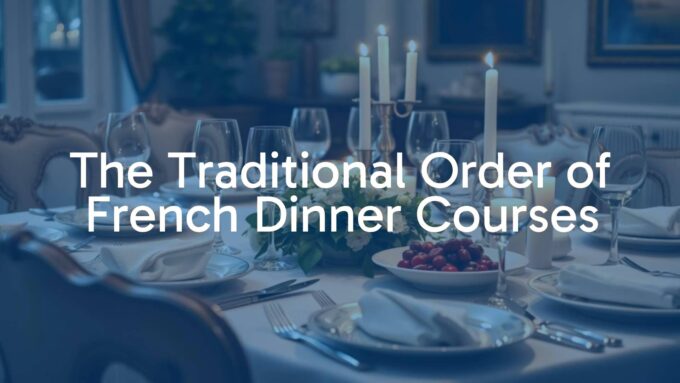French scarf tying is known for its easy grace and lasting style, turning a simple piece of fabric into a smart finishing touch. More than a basic wrap for warmth, French methods make the scarf a key part of an outfit, mixing function with a relaxed, chic feel. These methods favor soft drapes, gentle knots, and a “perfectly undone” look rather than tight, stiff ties. This guide will look at the charm of French scarf styling, its roots in French culture, the scarf types most used, and clear step-by-step ways to tie them.

What Makes French Scarf Tying Techniques Unique?
The appeal of French scarf tying comes from its quiet, polished look. It’s never about flashy tricks or complicated shapes. It’s about helping your own style shine with an accessory that looks thoughtful yet effortless. This reflects French fashion values: timeless pieces, good materials, and small, human touches instead of short-lived trends or loud logos.
French-style vs. Other Scarf Tying Methods
The big difference is the mindset. Many non-French styles focus on insulation, bold prints, or very complex knots. French style treats the scarf as part of the whole shape of the outfit. It adds texture, color, and a bit of personality without stealing the show. The knot supports the look; it doesn’t compete with it. The goal is that relaxed “perfectly undone” feel that makes even simple clothes look neat and put-together. You’ll see fewer hard knots and more flowing folds so the fabric moves nicely with you.
Cultural Importance of Scarves in France
In France, the scarf is more than an accessory; it’s a staple. People of all ages wear them all year. This comes from both practicality and taste. Scarves protect the neck from drafts and are often seen as a smart way to stay healthy in cool air. Beyond that, they signal care and polish. A scarf can add color and personality to a plain outfit in seconds. There’s even a common saying that going out without a scarf in chilly weather is asking for trouble-showing how normal and expected scarves are in daily life.
Common Types of French Scarves: Foulard, Écharpe, Étole
French has specific words for different scarves, and each one has typical materials and uses. This shows how important scarves are in French dressing.
- Foulard: The classic lightweight scarf, often silk, chiffon, or viscose. It can be square or rectangular. Common square sizes run from about 60x60cm to 150x150cm; rectangular ones range from about 30x160cm to 90x200cm. Worn mainly for style in mild weather or cool summer nights, it’s a great base for bright prints and color. Often tied at the neck as a highlight.
- Écharpe: A heavier, longer, and usually narrower scarf, often wool, cashmere, or cotton. Width is often 20-60cm. This is a winter standard built for warmth. Many choose subtle textures that blend with coats. It’s commonly wrapped around the neck or worn over the shoulders for comfort and protection.
- Étole: A large, thin, warm scarf, often wool, acrylic, or viscose. About 70cm by 2m is typical. Works as both scarf and wrap, good over the shoulders like a shawl or tied like a scarf if the fabric is thin. It gives real warmth with an elegant fall, fitting for cool weather or dressier layers.
| Type | Typical materials | Common sizes | Main use |
|---|---|---|---|
| Foulard | Silk, chiffon, viscose | Squares: ~60-150cm; Rectangles: ~30×160-90x200cm | Style, light coverage |
| Écharpe | Wool, cashmere, cotton | Width ~20-60cm (varied length) | Warmth, daily winter wear |
| Étole | Wool, acrylic, viscose | ~70cm x 2m | Wrap or scarf, events and cool days |

Types of Scarves Used in French Tying Techniques
The scarf you choose shapes which ties work best and how the final look feels. French style uses many scarf types, from casual to formal, each suited to different methods.
Silk Foulard: The Classic French Scarf
The silk foulard is the standout of French scarf fashion. Its smooth hand, bright prints, and beautiful drape make it a quick way to lift any outfit. Often linked with houses like Hermès, these mostly square scarves are light and meant for style more than warmth. They shine with classic knots that show off color and pattern, turning a simple look into something chic. It reflects the French idea that one well-chosen piece can define your outfit.
Rectangular Scarves and Their Versatility
Rectangular scarves-light foulards or heavier écharpes-are very flexible. The long shape allows many drapes, wraps, and knots. In warm weather, a light rectangle can be loose, looped once, or worn as a belt. In cold weather, a wool or cashmere écharpe can be wrapped a few times, tied in a Parisian knot, or laid over a coat. The length adds volume and layers, so it works for both warmth and sharp style. Many men favor them for simple knots like the Parisian or cross knot.
Square Scarves and Bandanas: Signature French Styles
Square scarves-small bandanas to big silk carrés-sit at the center of many French looks. The fold matters a lot: most start with a diagonal fold into a triangle. From there you can do the “Chic French Bandana” or “Triangle Fold,” with the point showing at the front. Small squares and bandanas add a bright splash near the face for a neat, playful touch. They also work in hair, showing the French habit of using scarves in creative ways. Large squares, especially in silk, lend themselves to fuller drapes or the classic Grace Kelly headscarf for old-school glamour.
How to Tie Scarves the French Way: Step-by-Step Techniques
Learning French scarf tying is about simple ideas that create ease and polish. Here are key methods that bring a Paris touch to what you wear.
The Classic French Knot
This go-to knot is great for printed silk foulards. Fold the scarf lengthwise into a narrow band. Wrap it around your neck so the ends cross behind your neck, then bring them to the front. Tie a single knot under your chin. Turn the band slightly so the knot rests to one side, then tie a second knot to hold it. This off-center knot gives that relaxed, intentional look.
The Parisian Knot
This simple method works well and keeps you warm. Fold a rectangular scarf in half. Place it around your neck with the loop on one side and the two ends on the other. Pull both ends through the loop. Slide the knot to the spot you like. This knot is stylish and practical, and you can loosen it quickly if you get warm. It’s a favorite in cooler months and between seasons.

The Over-the-Shoulder Drape
Easy and polished. Hang the scarf around your neck with both ends in front. Flip one end over the opposite shoulder, or flip both ends over their own shoulders. Aim for a casual feel, like you tossed it on as you left the house. This works nicely over a coat or blazer.
The Triangle Fold
Best with square scarves, this fold gives a clean triangle at the front for a modern, fun look. Fold a square in half diagonally. Place the triangle at the front of your neck with the point down. Wrap the two ends around your neck and tie at the back for a smooth front, or bring the ends forward to tie or leave loose. It highlights prints and pairs well with casual outfits.
The Necktie Knot
Good for larger squares when you want a more structured look. Fold the square into a triangle, then fold the tip up to the middle. Keep folding into a narrow ribbon. Place it around your neck. Tie a small knot on one side like the first step of a tie. Pass the other end through that knot and flatten it so it sits neatly, much like a slim necktie.
The Bow Knot
Charming with smaller squares. Fold into a triangle, then into a narrow ribbon. Place it around your neck and tie a double-looped bow like shoelaces. Keep the loops even. Let it sit at the front or slightly to the side for a soft, feminine finish.
The Spool Knot
Subtle and neat, this works well with a small foulard and can look like a delicate necklace. Fold the small square into a triangle and roll it from the long edge into a tidy tube. Place it around your neck and tie a simple knot. Then wind each end back around the rolled center, making a compact knot that rests close to the neck.
The Italian Twist
A calm, layered look for an oblong scarf. Fold the scarf into a narrow band, then fold in half to find the middle. Place the middle under your chin and cross the ends behind your head. Bring the ends forward over each shoulder and tie a loose knot. Gently loosen the folds so they fall softly for an easy, artful shape.
The Double Wrap-Around
Great for large square foulards. Fold or roll the diagonal into a wide ribbon. Wrap it once around your neck so both ends hang at the front. Tie the ends together. This makes a fuller, warm collar effect with a modern city vibe.
The Shawl Drape
For oversized squares or étoles, this method turns the scarf into a strong part of your outfit-ideal for parties, events, or weddings. Fold the scarf into a big triangle and place it over your shoulders with the point down your back. Tie the two front points at the front or to one side. It works as a soft layer that brings both style and a bit of warmth.
Additional Ways to Wear a French Scarf
French scarves aren’t just for the neck. Many people use them in hair, on the head, or as part of clothing to add color and structure.
Using Scarves as Hair Accessories: Headband and Chouchou Styles
Scarves make great hair accents. For the Casual Headband Style, fold a square into a triangle and place it on your head with the tip pointing toward your neck. Tie the other two tips at the back of your head for an easy, relaxed look. For the Chouchou Style (scrunchie), wrap a foulard around a bun or ponytail to hide the elastic, then knot or bow the scarf. With a longer scarf, let the ends trail for a boho touch.

Wearing Scarves on the Head: Grace Kelly and Bandana Looks
Headscarves offer both style and function, keeping hair in place while protecting from wind or sun. The classic Grace Kelly Style needs a large silk square (about 90x90cm). Fold it into a triangle and place it on your head with the point at the back. Cross the other two points under your chin and tie them behind your neck. For a casual option, the Bandana Style uses a simple tie on top or at the back. You can twist the scarf into a rope before tying for extra texture. Both looks work with hair loose or tied back.
Adapting Scarf Styles for Short Hair
Short hair pairs well with scarves. Headband and bandana styles look sharp without overwhelming the face. Use a thin, rolled foulard tied at the nape or the crown for a pop of color. With a bandana wrap, let the ends show or tuck them in neatly. These styles add flair and can also protect hair from wind on cool evenings.
Tips for Choosing and Maintaining French Scarves
A scarf’s long life and steady good looks come from both how you tie it and how you pick and care for it. Choose well and care for it right, and it will stay in your rotation for years.
Selecting the Right Material and Pattern
Choosing the right scarf is the first step to mastering French style. Material matters most. Silk foulards offer lightness, bright prints, and a lovely drape, ideal for decorative knots. Cotton foulards give a relaxed, breathable feel. For warmth, pick écharpes in wool, cashmere, or soft acrylic blends. For patterns, French style leans classic: clean motifs, detailed designs, or gentle textures. Look for scarves with a few colors that include your hair color for easy matching. A strong print can lift simple outfits, so choose designs you love that can stand on their own.
Care Instructions for Silk and Wool Scarves
Good care keeps your scarves looking new. Silk is delicate and usually needs gentle treatment. Dry cleaning is often the safest choice. If hand-washing, use a silk-friendly detergent in cool water. Don’t scrub or twist. Rinse well, press out water with a towel, then lay flat or hang to dry away from sunlight. Never use a dryer. Wool is more durable but still needs care. Hand-wash in cool water with wool detergent, squeeze gently, and lay flat on a towel to dry, shaping it as needed. Always read the care label since blends and dyes differ. Following these steps helps prevent damage, fading, and misshaping.
Storage to Preserve Shape and Color
Storage affects how long your scarves last and how fresh they look. To avoid creases, snags, and fading, store them with care. Roll delicate silk foulards instead of folding to avoid sharp creases. Keep them in breathable bags or wrapped in acid-free tissue to protect from dust and light. You can also hang silk on padded hangers with enough space to avoid crushing. Fold or roll wool and thicker scarves and keep them in drawers or on shelves. Don’t hang heavy scarves for long stretches since they can stretch. Keep all scarves out of direct sun and in a cool, dry place.
Frequently Asked Questions about French Scarf Tying
Even with a big guide, many people still have a few common questions. Here are clear answers to help you try these methods with confidence.
Should Men and Women Use Different Techniques?
French scarf tying is quite flexible and works for everyone. Many classic knots look good on men and women alike. The Parisian knot is a great example: warm and polished for anyone. Simple drapes and over-the-shoulder looks are also universal. The main difference is often the scarf choice. Men may pick larger rectangular écharpes in solid or muted tones for stable knots like the Pretzel knot. Women may choose printed foulards and softer, decorative ties. In the end, wear what feels good and suits your taste.
Are French Scarf Knots Suitable for All Seasons?
Yes. Scarves are part of French style all year. The trick is to match fabric and thickness to the season. Light silk or cotton foulards work for spring, summer nights, and autumn. Knots like the Classic French Knot, the Bow Knot, or a loose drape add style without heat. In winter, wool or cashmere écharpes shine. Try the Parisian Knot, Double Wrap-Around, or a full Shawl Drape for added warmth. Even in summer, a foulard can be handy in the evening when temperatures dip.
How to Prevent Scarves from Slipping or Unraveling?
Slipping happens, but a few habits help. First, fabric choice matters. Silk is smooth and can slide; wool and cotton grip better. Tie knots firmly but not too tight. For styles like the Classic French or Parisian knot, use a double knot for extra hold. With very slick silk, use a small scarf ring or clip to keep the knot in place. For draped looks, tuck ends into a coat or jacket. Wearing the scarf over a textured top, like cotton, helps it stay put. With a little practice, you’ll find the right tension and placement so your scarf sits nicely all day.













Leave a comment